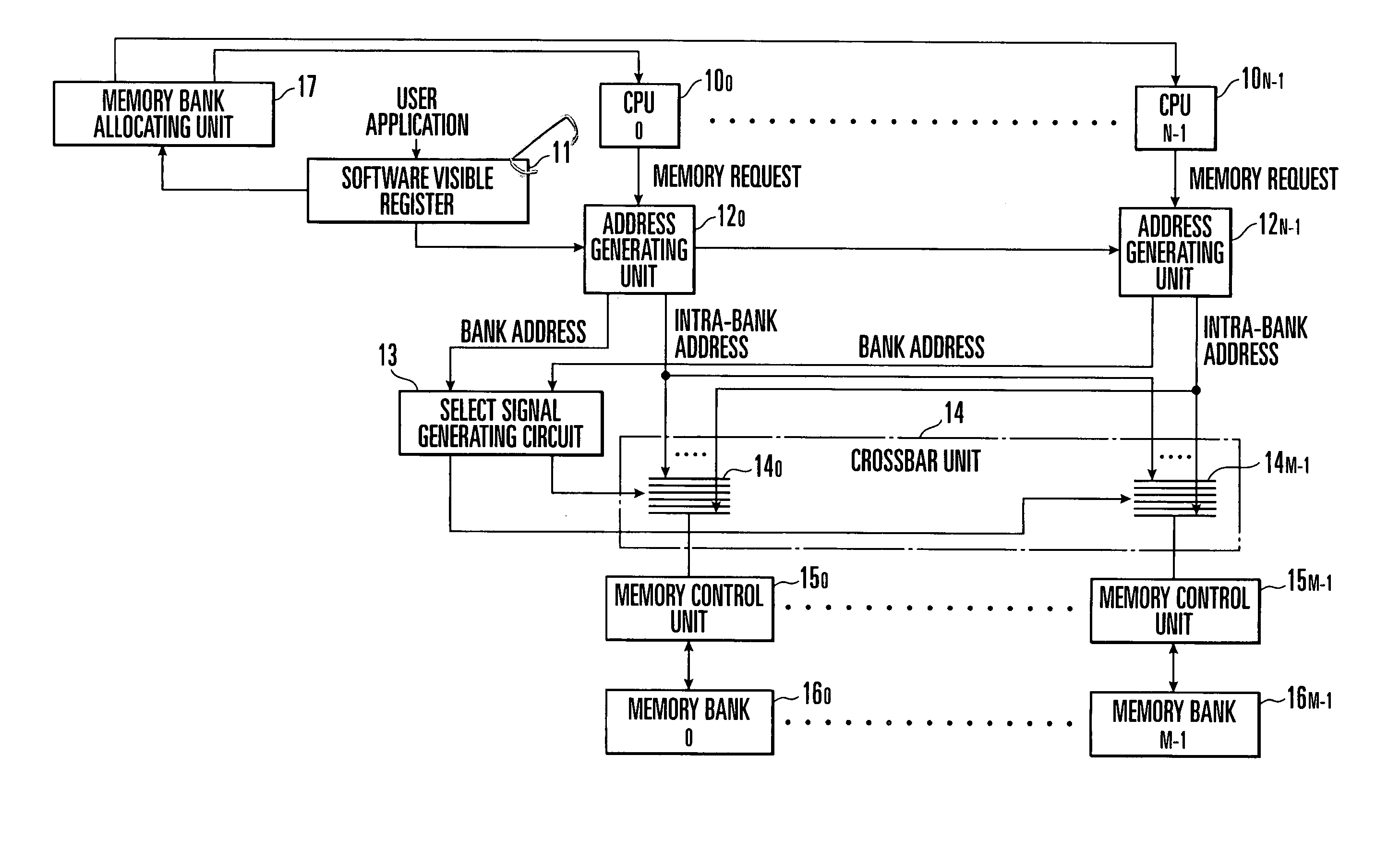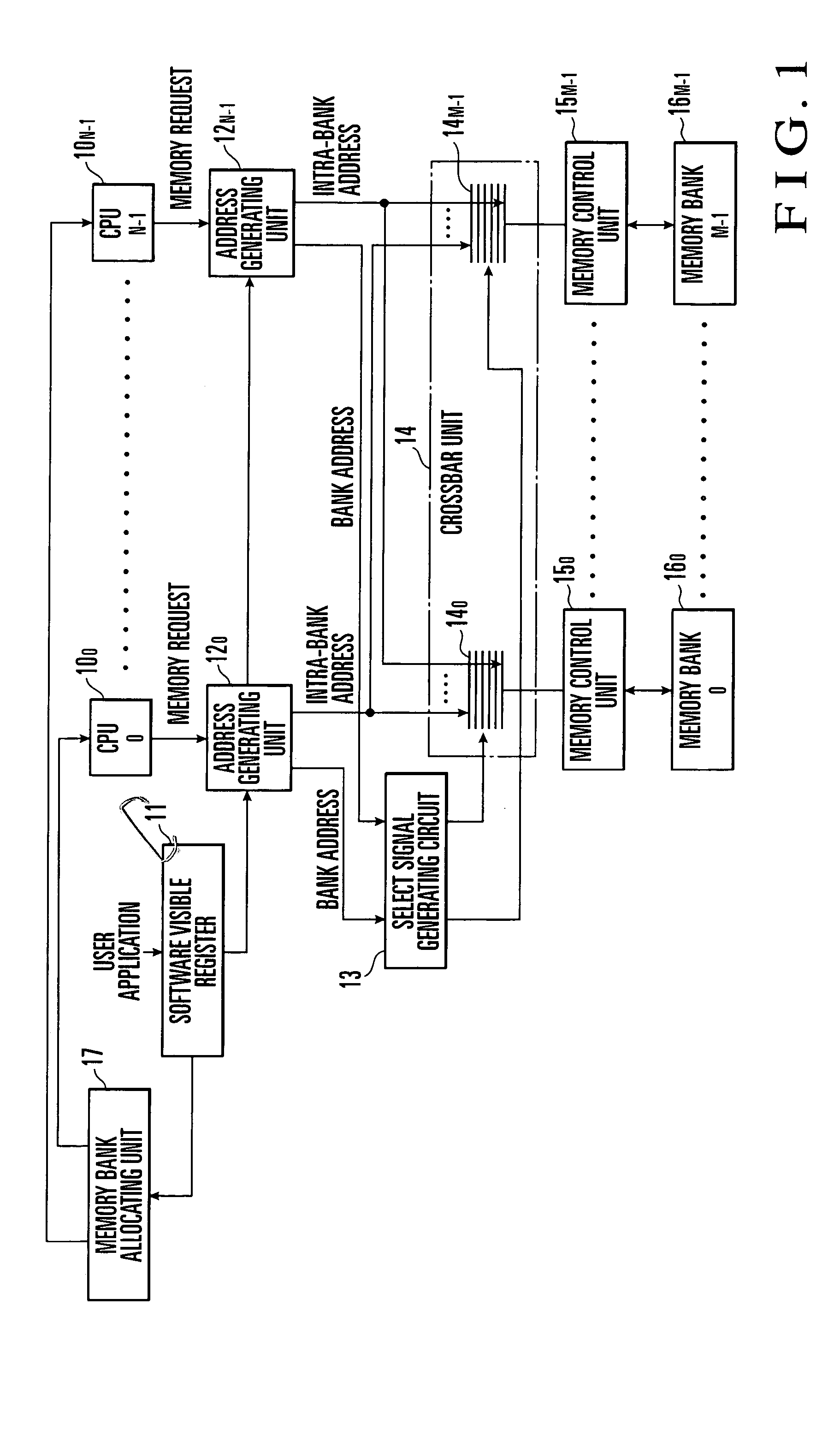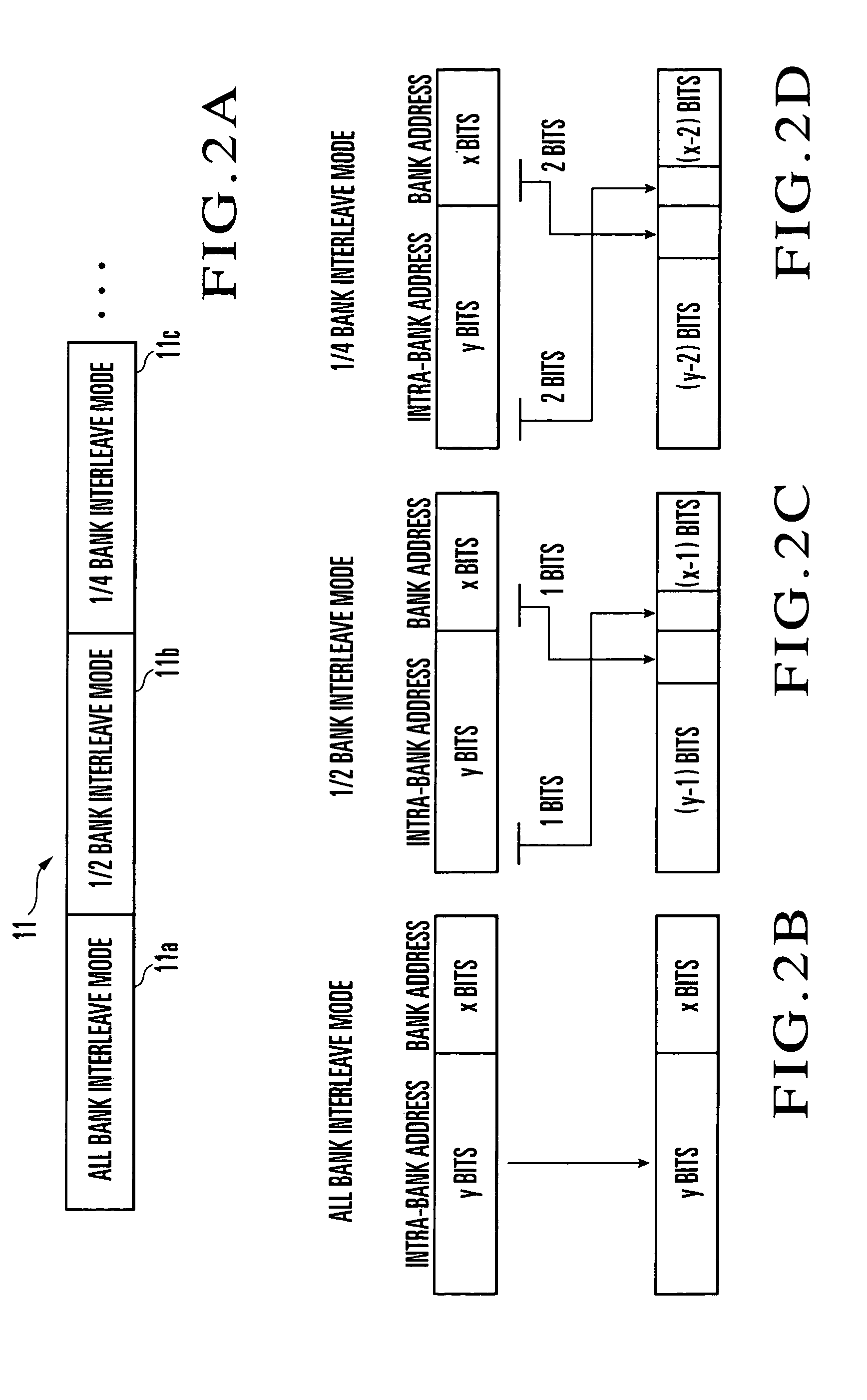Memory interleave system
a memory interleave and memory technology, applied in the field of memory interleave system, can solve the problems that the conventional memory interleave system cannot improve the performance degradation, and achieve the effect of preventing memory bank contention and improving memory throughpu
- Summary
- Abstract
- Description
- Claims
- Application Information
AI Technical Summary
Benefits of technology
Problems solved by technology
Method used
Image
Examples
first embodiment
[0016]FIG. 1 shows the arrangement of a memory interleave system according to the first embodiment of the present invention. The memory interleave system according to the first embodiment is comprised of N (a natural number) CPUs (computing means) 100 to 10N-1, a software visible register 11, N address generating units 120 to 12N-1 connected to the CPUs 100 to 10N-1 in a one-to-one correspondence, a select signal generating circuit 13, a crossbar unit 14 comprised of M (M is 2p0 where p is an integer equal to or more than two) selectors 140 to 14M-1, M memory control units 150 to 15M-1 connected to the selectors 140 to 14M-1 in a one-to-one correspondence, M memory banks 160 to 16M-1 connected to the memory control units 150 to 15M-1 in a one-to-one correspondence, and a memory bank allocating unit 17. Note that “N” represents the number of connected CPUs (the number of input ports), and “M” represents the number of connected memory banks. In addition, in the first embodiment, p is ...
second embodiment
[0051]FIG. 4 shows the arrangement of a memory interleave system according to the second embodiment of the present invention. In the memory interleave system according to the first embodiment shown in FIG. 1, a user application sets a value indicating a bank interleave mode in the software visible register 11. That is, the user application determines a bank interleave mode. In contrast to this, in the memory interleave system according to the second embodiment, a memory bank allocating unit 17 sets a value in a software visible register 11.
[0052]Note that since other portions of which no mention is particularly made are configured in the same manner as corresponding portions in the interleave system according to the first embodiment, they are denoted by the same reference numerals, and a detailed description thereof will be omitted.
[0053]In the memory interleave system according to the second embodiment having the above arrangement, when assigning jobs to be executed to CPUs 100 to ...
third embodiment
[0056]FIG. 5 shows the arrangement of a memory interleave system according to the third embodiment of the present invention. In the memory interleave systems according to the first and second embodiments shown in FIGS. 1 and 4, a bank interleave mode is determined by setting a value indicating a bank interleave mode in the software visible register 11. In contrast to this, in the memory interleave system according to the third embodiment, a user determines a bank interleave mode by manually setting a value indicating a bank interleave mode with a hardware switch 21 such as a dip switch.
[0057]Note that since other portions of which no mention is particularly made are configured in the same manner as corresponding portions in the interleave system according to the first embodiment, they are denoted by the same reference numerals, and a detailed description thereof will be omitted.
[0058]In the memory interleave system according to the third embodiment having the above arrangement, the ...
PUM
 Login to View More
Login to View More Abstract
Description
Claims
Application Information
 Login to View More
Login to View More - R&D
- Intellectual Property
- Life Sciences
- Materials
- Tech Scout
- Unparalleled Data Quality
- Higher Quality Content
- 60% Fewer Hallucinations
Browse by: Latest US Patents, China's latest patents, Technical Efficacy Thesaurus, Application Domain, Technology Topic, Popular Technical Reports.
© 2025 PatSnap. All rights reserved.Legal|Privacy policy|Modern Slavery Act Transparency Statement|Sitemap|About US| Contact US: help@patsnap.com



